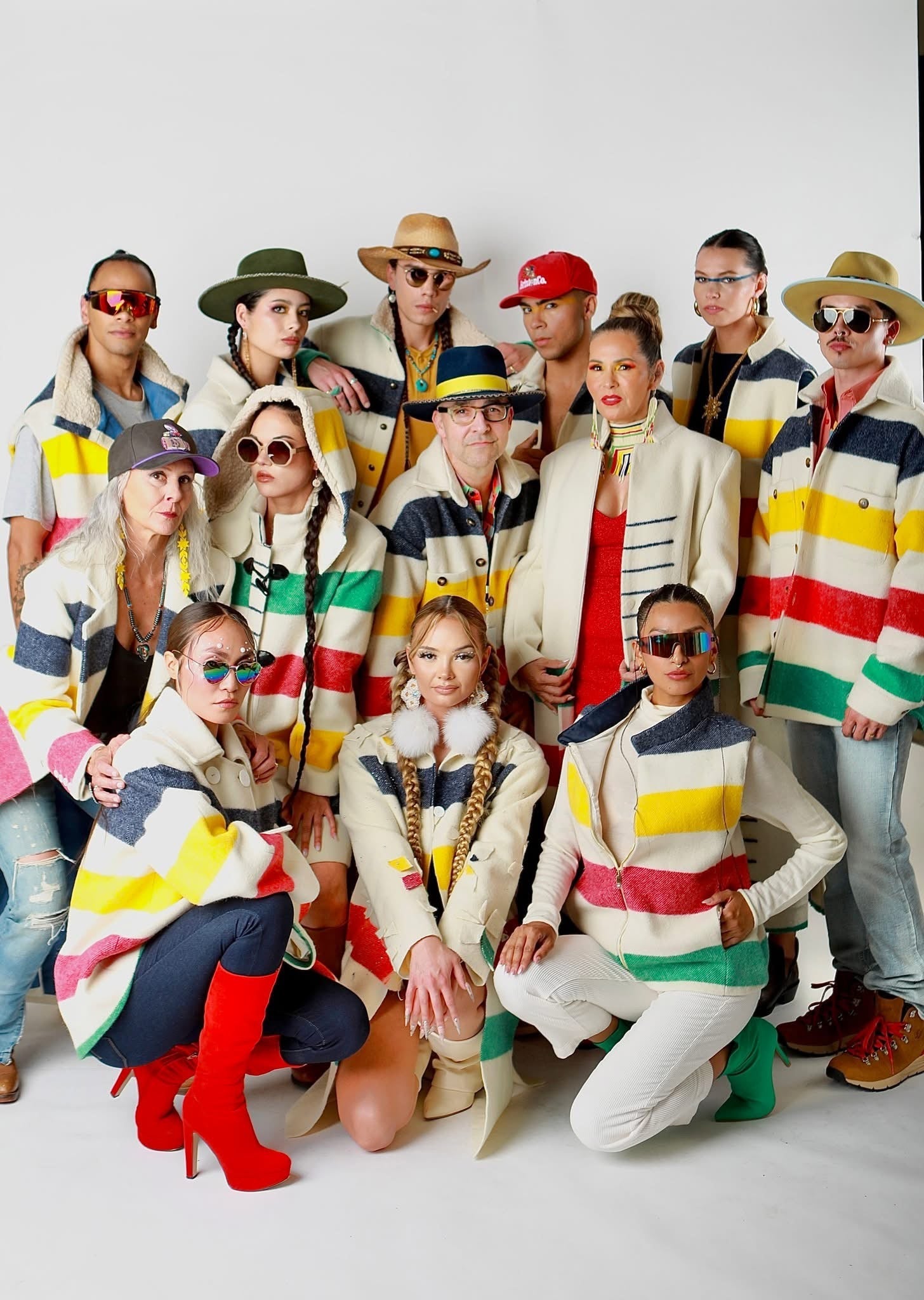Article: Honoring Heritage: Hoyle Hat Co Hudson’s Bay Blanket Company on National Indigenous Peoples Day

Honoring Heritage: Hoyle Hat Co Hudson’s Bay Blanket Company on National Indigenous Peoples Day
Honoring Heritage: Hoyle Hat Co. & Hudson’s Bay Blanket Company on National Indigenous Peoples Day
On National Indigenous Peoples Day, we at Hoyle Hat Co. reflect on a layered, often emotionally fraught history — one that includes commerce, culture, colonialism, and resilience. This year, we’re particularly proud to highlight our collaboration with Hudson’s Bay Blanket Company from last year — a partnership grounded in respect, authenticity, and awareness of the past.
A brief, honest history: Hudson’s Bay & its legacy
-
The Hudson’s Bay Company (HBC) was chartered on May 2, 1670 as an English trading enterprise. Encyclopedia Britannica+2clo-ocol.gc.ca+2
-
Its early purpose was to trade goods — especially European manufactured goods — for furs from Indigenous peoples across what was then known as Rupert’s Land. Canadian Geographic+3globalcapitalism.history.ox.ac.uk+3National Park Service+3
-
Over time, HBC’s influence expanded not just in trade but in governance: in many regions, it acted as a de facto authority and landholder. Canadian Geographic+2nwcouncil.org+2
-
Its most iconic product—the point blanket (the white wool blanket with colored stripes)—became an enduring symbol of both utility and contested meaning. Many Indigenous communities received these blankets in trade, sometimes under inequitable terms.
-
The narrative of Hudson’s Bay is inseparable from settler colonialism and land dispossession. Its commercial success was built upon often-unbalanced relationships with Indigenous nations. Canadian Geographic+1
-
In recent years, HBC has faced financial and structural challenges, including insolvency proceedings in 2025 and major store closures (reflecting the strain on traditional retail models). Storeys+2Reuters+2
When we engaged in our collaboration last year, we knew we were working with a brand burdened by this history. Our approach was to acknowledge it, listen to voices in Indigenous communities, and amplify the narratives that are too often silenced.
The collaboration: what it meant to us

Through our joint project with Hudson’s Bay Blanket Company, we intended to do more than just “co-brand.” We aimed to:
-
Center Indigenous voices — from design consultation to storytelling and credit.
-
Invoke tradition responsibly — using elements like blankets not as decorative props, but as carriers of memory and meaning.
-
Educate and inspire — in product descriptions, media, and events, we wove in context (why the stripes, why the blanket, the relationships behind trade, etc.).
-
Share value — through fair revenue splits, royalties, or contributions to Indigenous initiatives (if your project had that component, this is a place to mention it).

The result was a collection that honored the past while looking forward — not ignoring tension, but leaning into dialogue.
Beyond Hudson’s Bay: Contemporary Indigenous designers blazing trails
While the legacy of colonial brands looms large, there’s powerful ongoing work from Indigenous designers who are redefining fashion, identity, and sovereignty:
-
Dorothy Grant (Haida) has long been celebrated for integrating Haida art forms into fashion, creating ceremonial and everyday wear with deep cultural resonance. Elle Canada+1
-
Lesley Hampton (Anishinaabe) builds a brand around body positivity, mental wellness, and Indigenous identity. Lesley Hampton
-
Lindsay King (Saulteaux, Mohawk) designs luxury outerwear that fuses Indigenous materials and storytelling with contemporary fabrication. VIFW | Vancouver Indigenous Fashion Week
-
Section Thirty Five (founded by Justin Louis of the Samson Cree Nation) merges streetwear with Indigenous cultural motifs and contemporary narratives. Elle Canada
-
Osamuskwasis is an Indigenous clothing brand blending traditional aesthetics and modern sensibilities. Osamuskwasis
-
Indigenous Fashion Arts (IFA) in Toronto fosters designers from across Turtle Island, curating showcases that highlight emerging voices. Vogue
These designers aren’t just incorporating culture — they are reclaiming it, reinterpreting it on their own terms, and pushing the fashion world to evolve.

Why this matters to us — and to you
-
Memory over aesthetic: When we incorporate Indigenous heritage in design, it’s not a “creative motif” — it’s history, relationship, and responsibility.
-
Economic justice: Supporting Indigenous brands means shifting monetary power and recognition to communities long marginalized in fashion.
-
Truth and reconciliation: Honest engagement means talking about colonial pasts, land, and cultural loss — not erasing or glossing over them.
-
Cultural resilience: Every garment, collaboration, or story that uplifts Indigenous artistry contributes to the ongoing revival of languages, practices, and traditions.
A toast (with humility)
On this National Indigenous Peoples Day, we raise our hats to the stories behind the stripes, to the voices too often silenced, and to the resilience that endures. Working with Hudson’s Bay Blanket Company last year was a learning moment — one where we committed to transparency, respect, and partnership.
To Indigenous designers everywhere: thank you for your courage, your artistry, and your vision. We stand in admiration, allyship, and hope.

